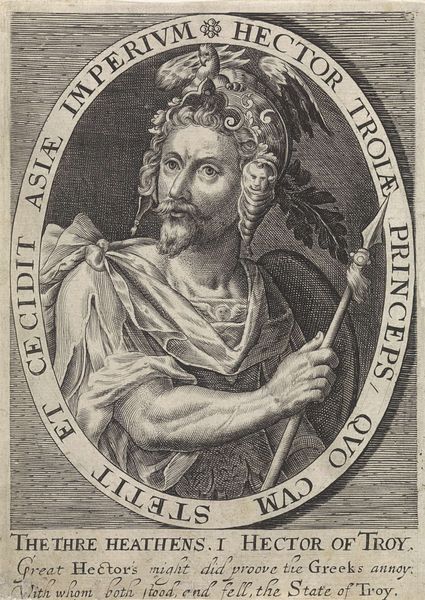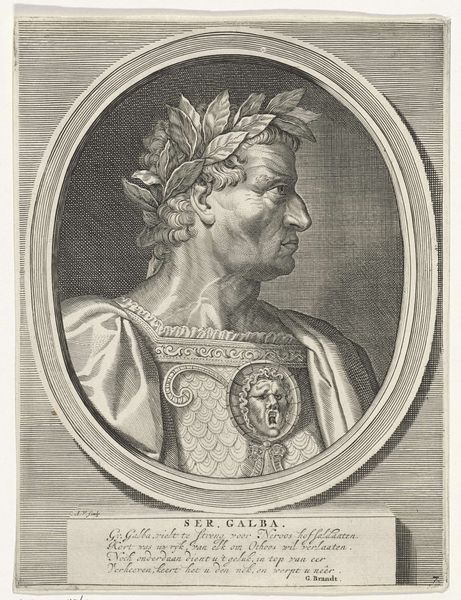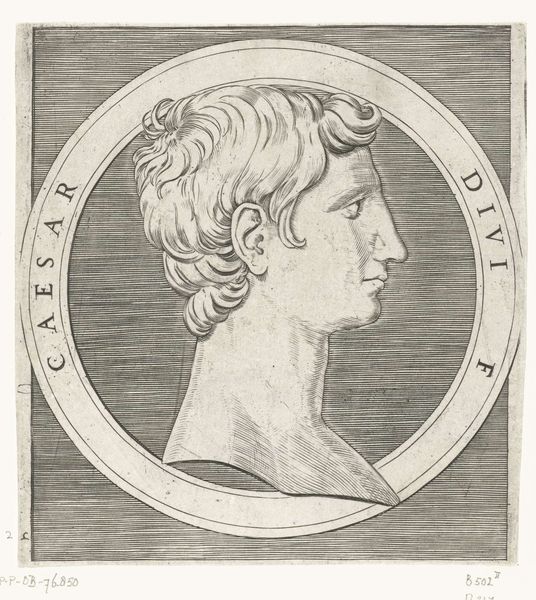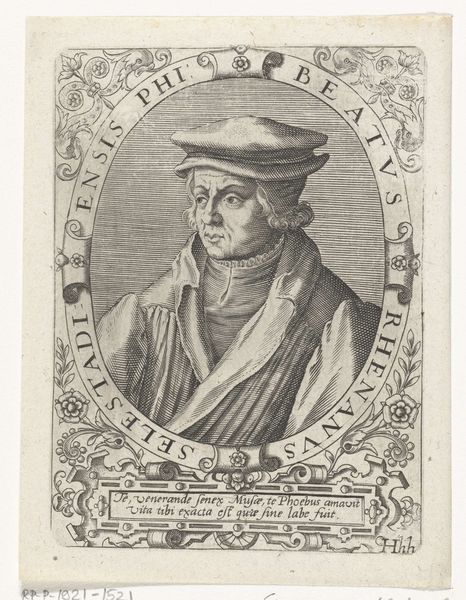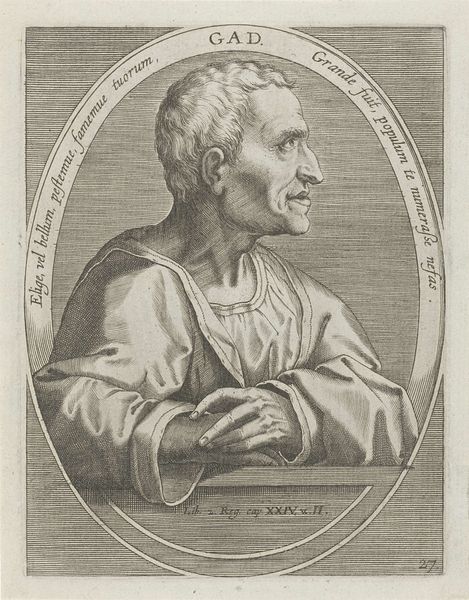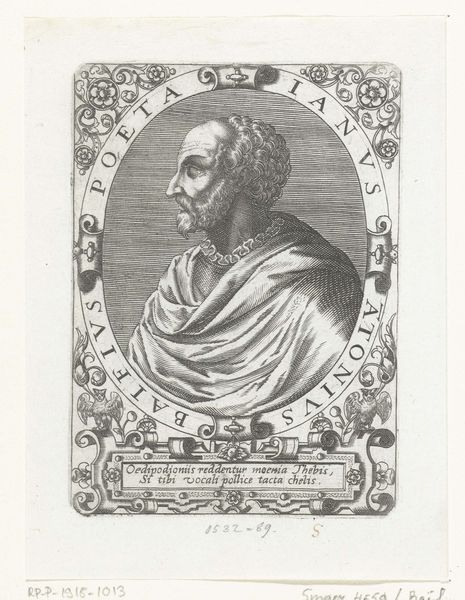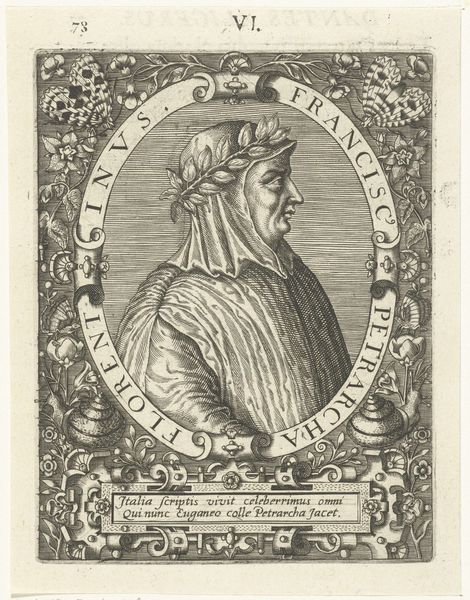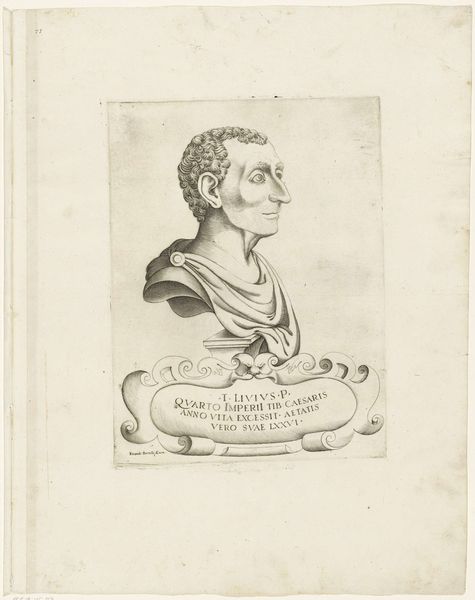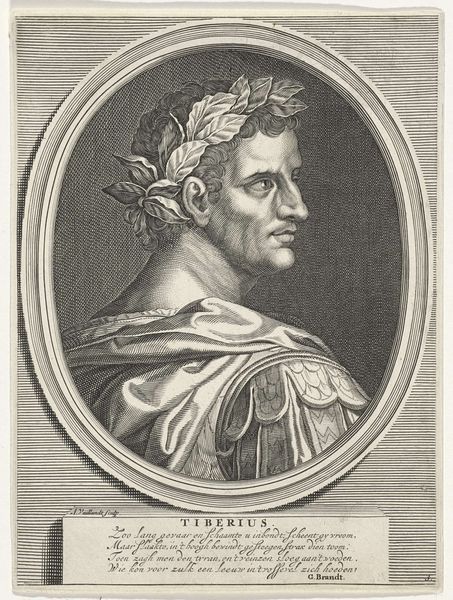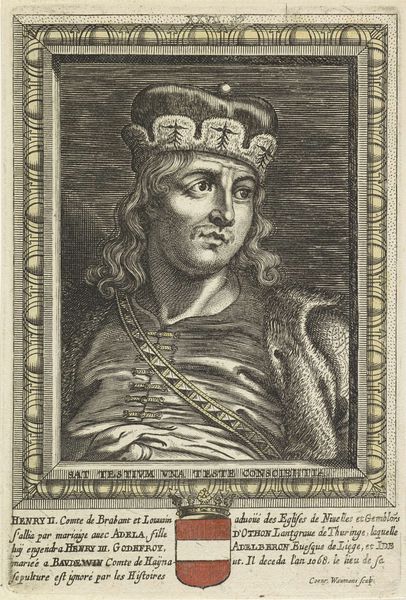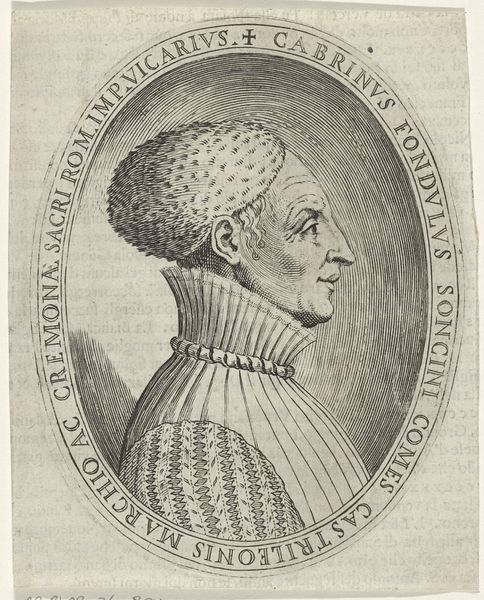
print, engraving
#
portrait
#
baroque
# print
#
old engraving style
#
romanesque
#
history-painting
#
engraving
Dimensions: height 176 mm, width 121 mm
Copyright: Rijks Museum: Open Domain
Editor: Here we have Willem de Passe's engraving, "Julius Caesar as one of the Nine Heroes," created sometime between 1621 and 1636. The detail achieved with just lines is really striking. What strikes you most about the composition of this portrait? Curator: I am drawn to the oval frame. Note how the carefully inscribed Latin text mirrors the curve. The lettering itself, observe its serifs and consistent weight, adding a layer of graphic structure. It creates a defined space, drawing our eyes to the figure within. Do you agree? Editor: Absolutely, it really locks the subject in. The details in his armor and laurel wreath are incredible, especially considering it’s just an engraving. Curator: Precisely. Let's examine the artist’s command of line. Consider the density of lines used to define shadow, juxtaposed with the sparse hatching suggesting highlights. Note how this interplay shapes the form, creating volume and texture, using only tonal variation, isn't it interesting? Editor: Very clever! It’s almost like a study in contrasting textures – the smoothness of his face versus the intricacy of the drapery. Did the choice of an engraving affect that texture? Curator: Indeed. The medium dictates the aesthetic possibilities. An engraving, with its crisp, precise lines, lends itself well to capturing the minute details and controlled tonal gradations we see here. Editor: That makes sense. I’m seeing the artist's choices in a whole new light now, not just what he’s depicting. Curator: Exactly! Analyzing the form gives you just as much insight as the subject itself. Form and function unite. Editor: This was extremely helpful in starting to consider new ways of thinking about artwork.
Comments
No comments
Be the first to comment and join the conversation on the ultimate creative platform.
